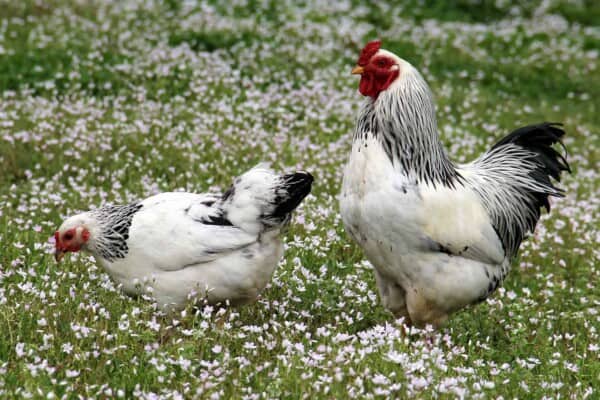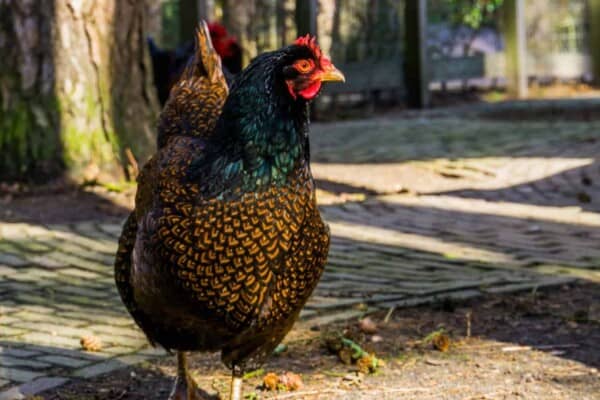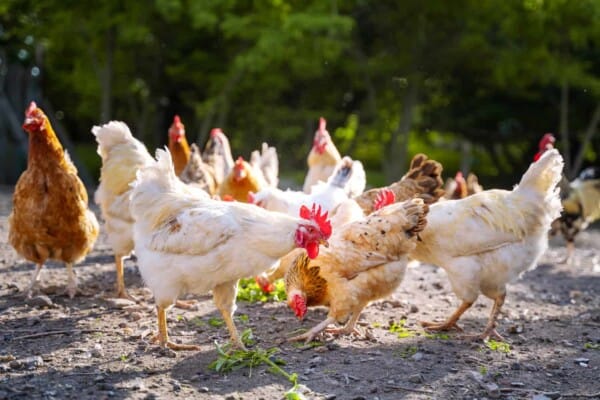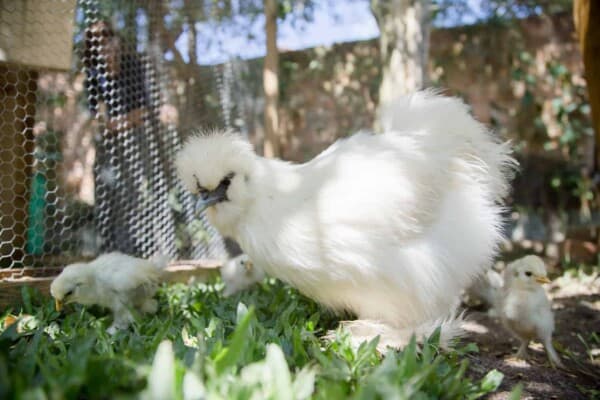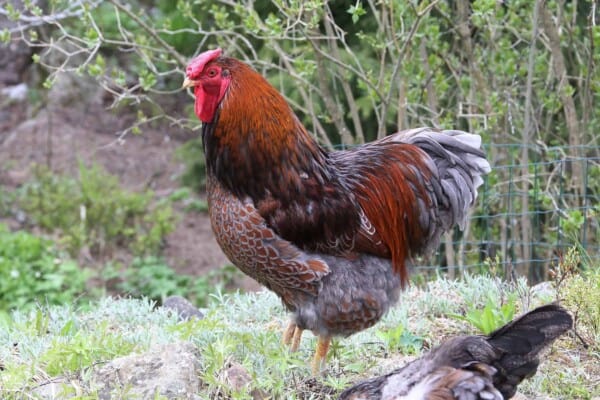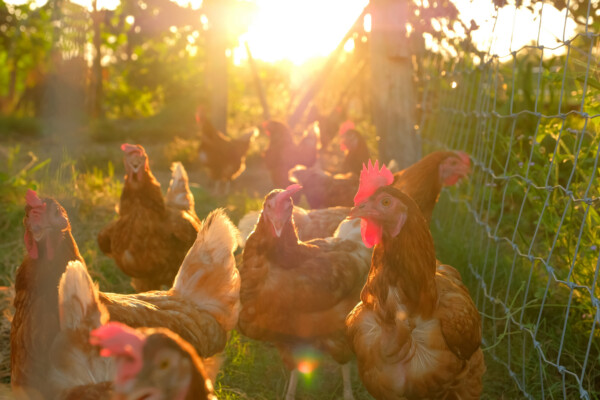If you’re on the lookout for a good egg producing chicken, chances are that you already know which one to go for. This is because, depending on which breed you go for, you’ll get eggs of a different size, color, taste and quantity altogether.
This makes it easy for you to find a good chicken breed to invest into, but sadly this doesn’t usually apply for their meat production too.
Sure, some chicken breeds can be larger than others, but for the most part it’s pretty hard to find a breed that has a higher quality meat than others.
There is one breed though that is not talked about anywhere near as much as it should be in our opinion, and we would like to change that.
While Cornish Cross chickens are not exactly unpopular, they are very rarely the first option that people consider when they go for a good homegrown meat selection.
This is why, for today, we decided to give you a brief rundown of everything that makes the Cornish Cross chicken unique, in the hopes that you may actually consider going for it if you’re looking for a new option to sink your teeth into (both figuratively and literally).
So, let’s not waste anymore time and instead hop into the early beginnings of the breed:
The History and Origins of the Cornish Cross Chicken

Believe it or not but the origins of the Cornish Cross chicken actually stem in Delaware of all places, after a woman by the name of Celia Steele decided to take on the job to create a better alternative to the local chicken breeds for meat purposes.
Her husband was working for the Coast Guard at the time, and while not exactly impoverished, they weren’t swimming in the dough either, which is why she decided to raise her own chickens for meat and sell them for money.
As the years rolled on by though, she realized the potential in the project, which led to her eventually building a huge birdhouse in 1926 which was so massive, that it could house as many as 10,000 chickens at once.
Her ticket to fame came soon after, when the “Chicken of Tomorrow” contest was announced. This project was supported by the United States of Department of Agriculture, and it was a huge opportunity that Celia didn’t want to miss out on.
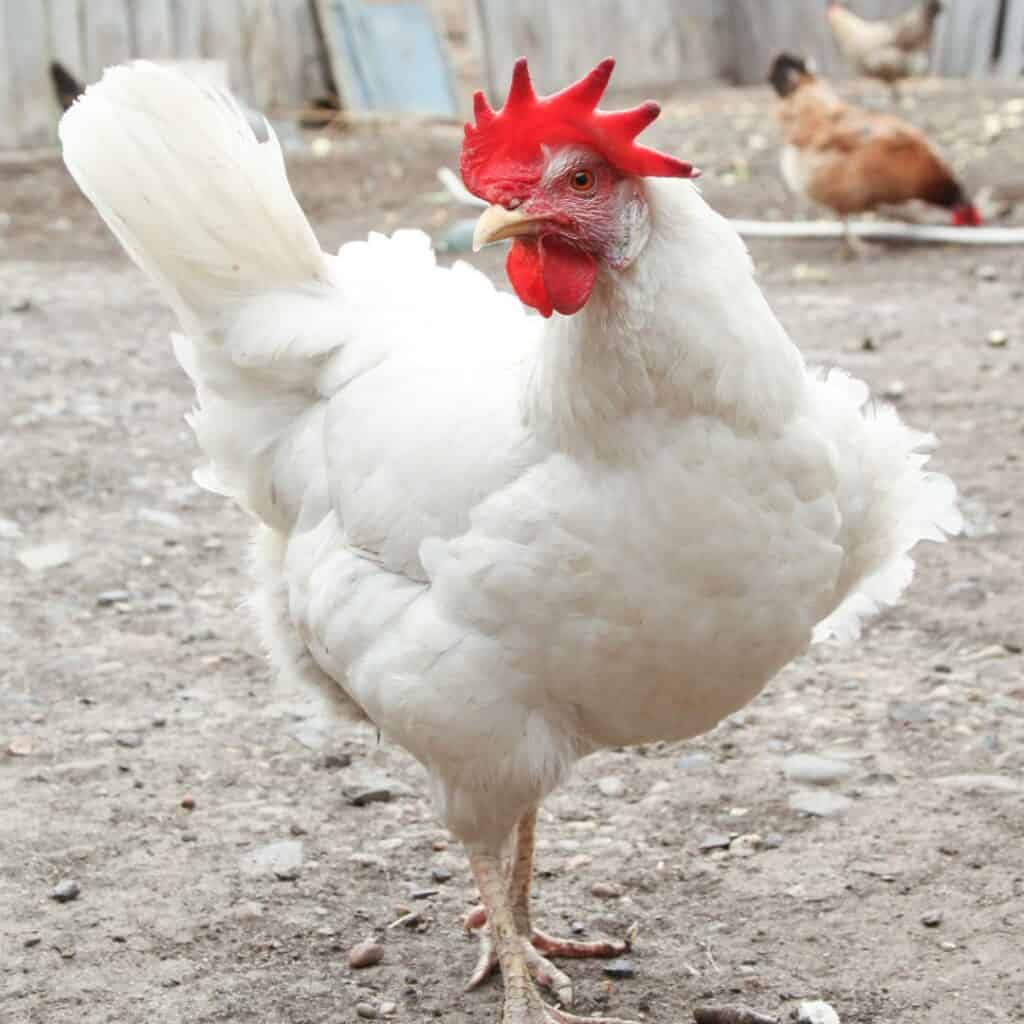
So, she sent over a few broiler eggs to the hatcheries there, where they were to be hatched, raised and then rated based on their meat production and feed conversion efficacy.
The winner was announced in 1948, and it was a White Plymouth Rock that was bred by none other than Henry Saglio.
Besides this beautiful specimen, another notable entry was a Red Cornish cross that came directly from the Vantress hatchery.
Seeing that these were the top broilers, the breeders decided to do a bit of an experiment, coupling the two, eventually merging their genes into what would become the early predecessor of the modern Cornish Cross.
Different Varieties of Cornish Cross Chicken

Now, keep in mind that when we say the “modern” Cornish Cross, we don’t necessarily refer to any single strain out there.
This is worth mentioning because there are more than a handful of them around, with the most common being the Cobb 500, Ross 308 and of course, the Ross 708.
You can quickly identify these three strains based on the fact that they are all white-feathered with yellow legs, although the Cobb 500 is known to be a bit on the rounder side and it can have a few black specks over its torso.
As such, the Cobb 500 and the Ross 308 are fan-favorite options for their breast meat, which is why they are often times cited as the “Jumbo Cornish Cross”.
But if you want a more balanced meat production as opposed to a breast-heavy strain, you can always just go with the Ross 708 strain.
While they may grow a bit slower than the other two strains, they will eventually catch up in a few weeks or so, so you won’t have to worry about them being smaller or whatnot. This strain of Cornish Cross chicken is also referred to as the ‘Cornish Rock”.
The Benefits of Raising Cornish Cross Chicken
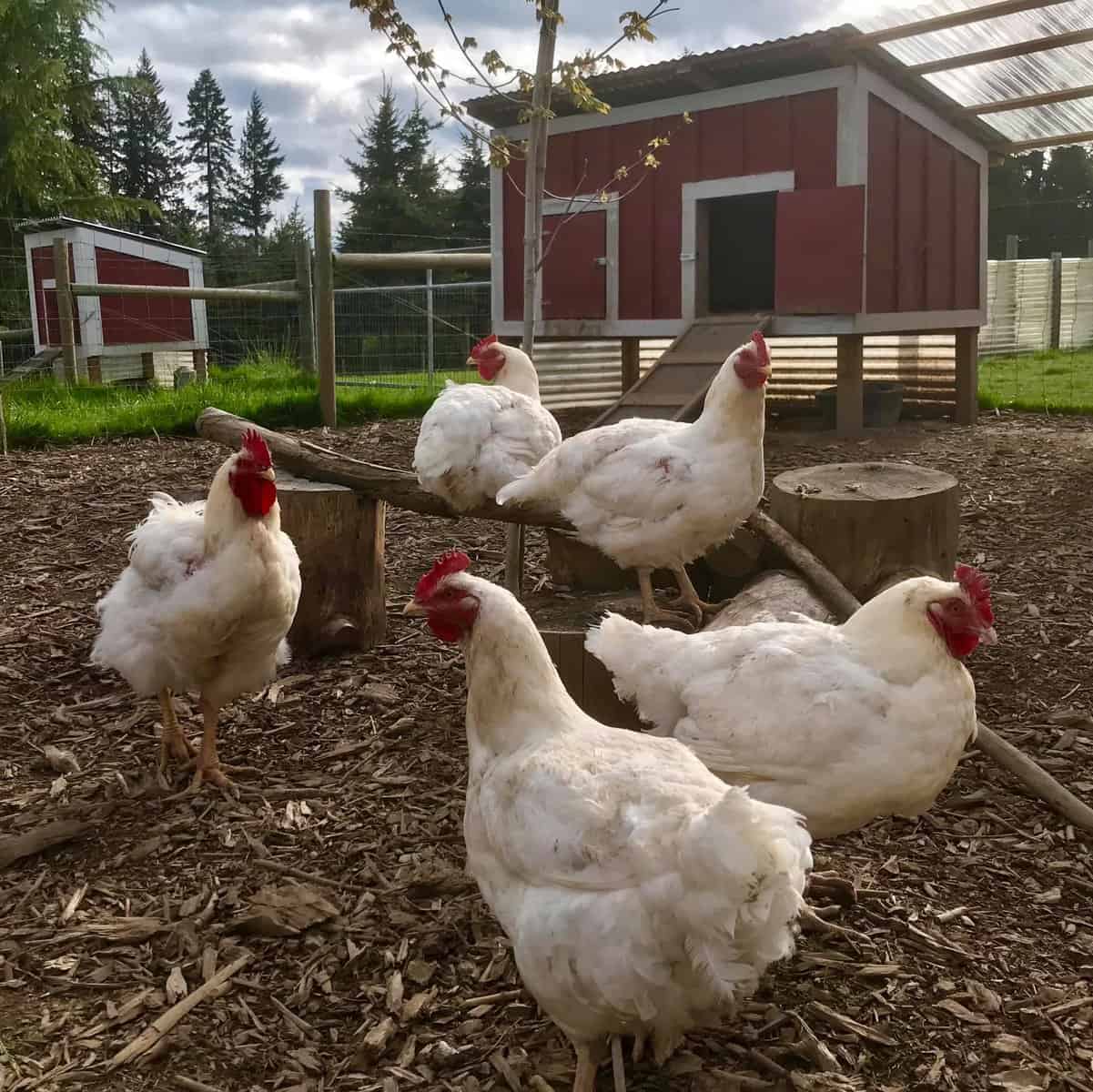
While we would still argue that the Cornish Cross chicken is not the “perfect” meat bird out there, it does come with more than its share of benefits, including the following:
- They grow fast – Compared to most other chicken breeds around, the Cornish Cross chicken can easily grow from chicks to butchering size in less than 8-10 weeks per average. As such, you can always opt for them if you want to have a constant influx of protein around the house.
- The meat tastes good – This may sound like a bit of an understatement, but the meat of the Cornish Cross chicken is definitely better than most others that we have tried so far. We even tried to compare it with a Rhode Island Red’s meat and the results were quite obvious. They also make delicious chicken broth for canning and if you have a smoker, you have got to try their meat at least once.
- They’re easier to butcher – This is another strange one, but you’ll have to trust us on what we say here because it’s really worth noting. This is because their internal organs come out of their chest cavity with ease, and they have way less feathers which makes them easier to pluck and prepare.
The Disadvantages of Raising Cornish Cross Chicken

While we did praise the Cornish Cross chicken heavily so far, we need to warn you that there are a handful of disadvantages that are worth looking into for you to know whether you’ve made the right choice or not investing into them.
Take for example the following:
- They’re not a self-sustainable meat source – The thing that we always bring up against getting a pair of Cornish Cross chicken is that you can’t hatch them at will, you will need to buy them yourself. This will cause a dependance to the stores, which is never a good thing.
- They’re not great at pasture raising – While they don’t downright avoid grass, they are a lot worse at foraging than most other chicken breeds we’ve owned over the years. So, if you want to go for a breed that can clear out pastures in no time, you may want to invest elsewhere.
- They have a high mortality rate – This is quite a problem because it details the worst part about raising your own chickens as opposed to buying the meat from the shop, and that is the fact that they sometimes die before the butchering can even start. This is a problem that plagues the Cornish Cross chicken and tarnishes its reputation for sure.
Raising the Cornish Cross Chicken
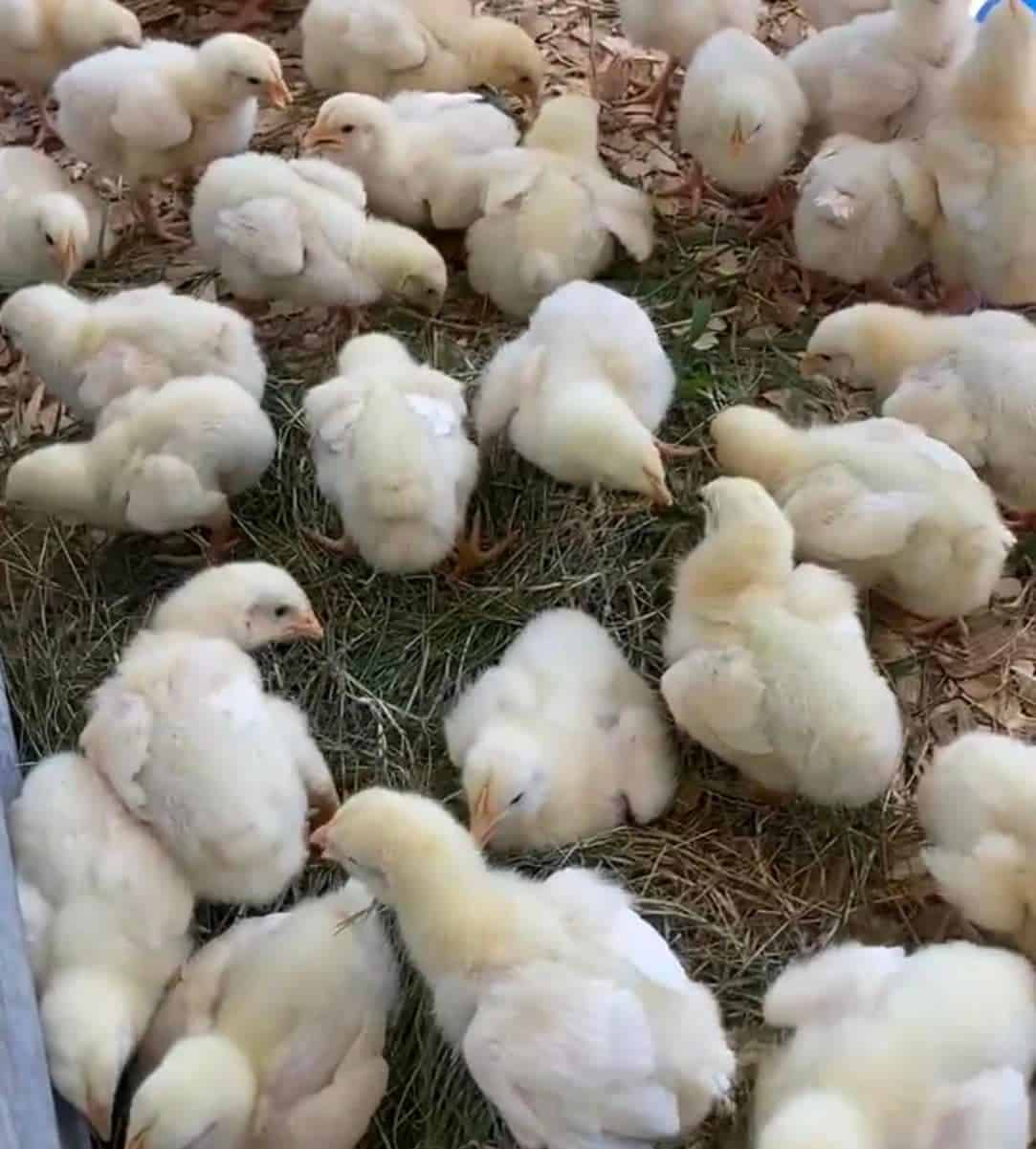
So, let’s say that you are pretty much dead set on getting yourself a good Cornish Cross chicken. How do you get everything ready though?
Well, first and foremost you’ll need to decide which strain you want. We talked a bit about them above so you should be able to tell which one is perfect for you.
Now that you know, you need to find a local hatchery that can provide you with a Cornish Cross chicken, in which case we recommend that you familiarize yourself with raising commercial broilers.
This is because, while they may not seem like it, the Cornish Cross chickens are quite unique, and as such they need to be treated differently than your average backyard chickens.
First and foremost, remember the fact that they grow faster than the average chicken, being ready to be processed by the time they get to the ripe old age of 10 weeks at the latest.
You may think that it is cruel to butcher them when they’re this young, but trust us when we tell you that that you’re doing them a favor, because they have been specifically bred to get large fast, which means that if you don’t butcher them then, they’re likely to grow too big for their own good.
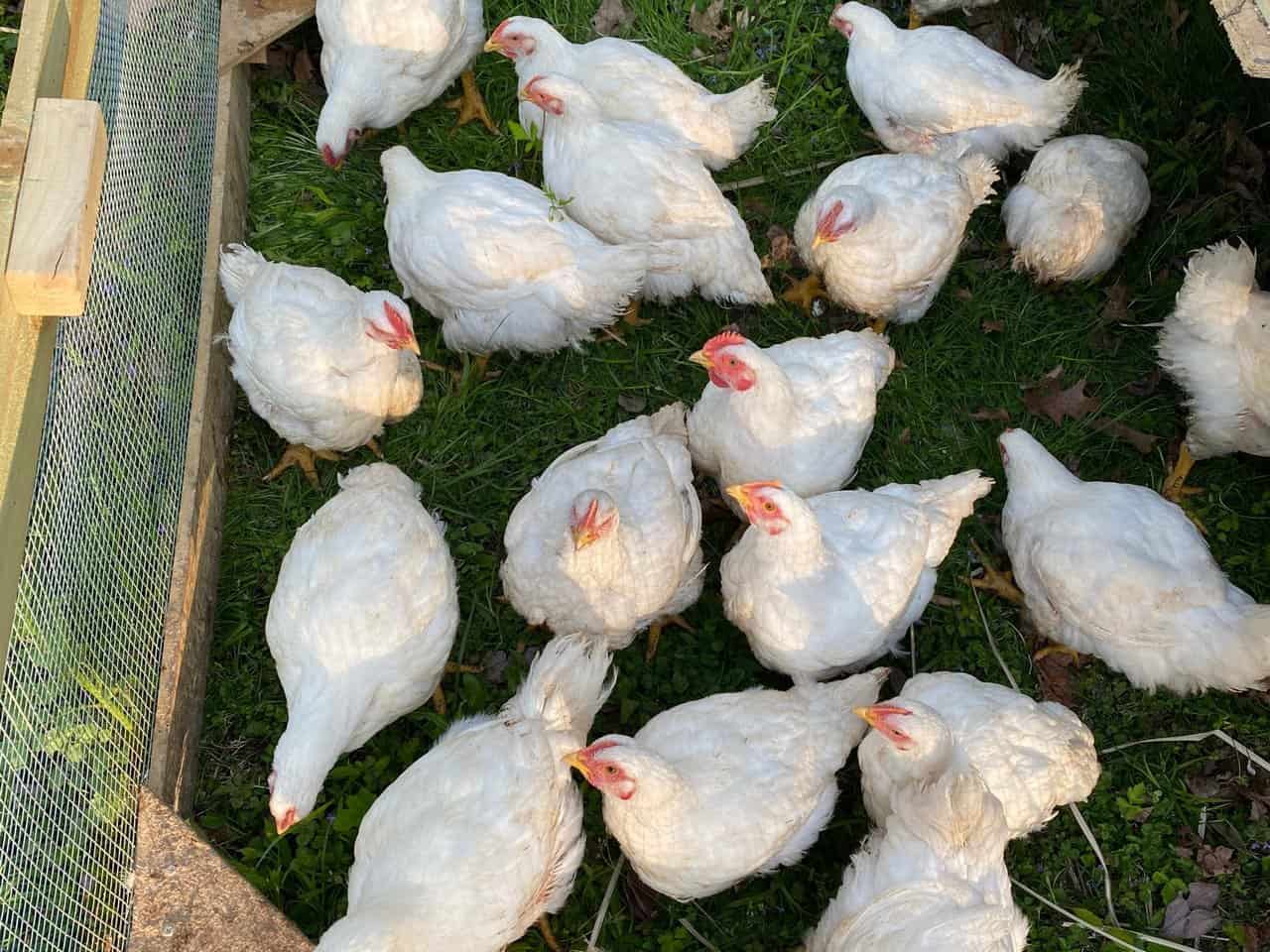
This can lead to a series of leg and heart problems that they should never be exposed to, so, as much as we love the idea of raising them around your farm until they die of old age, this is not the breed for that.
On top of that, they are also not that good at foraging, which is why you’ll need to invest into their feeders a lot more than you would for most other chicken breeds.
We also noticed the fact that they love to drink a lot more water, so definitely make sure to keep them satisfied at all times because they can drop like flies if their needs are not met.
Another thing to keep in mind is that they poop a lot, and they do so everywhere, so make sure to keep that in mind and clean up after them.
Because they are bred for their meat, you can expect their diet to be heavy protein based, which will in turn lead to their droppings being awful smelling.
As such, you will need to clean up after them on the daily, unless you want to pass out because of the smell alone.
This makes the Cornish Cross chicken quite a high-maintenance bird to own, but remember that you only need to do this for a couple of months so, with you pretty much being able to take them to the processor before the other chicken breeds can even start producing anything.
Fun Facts About Cornish Cross Chickens
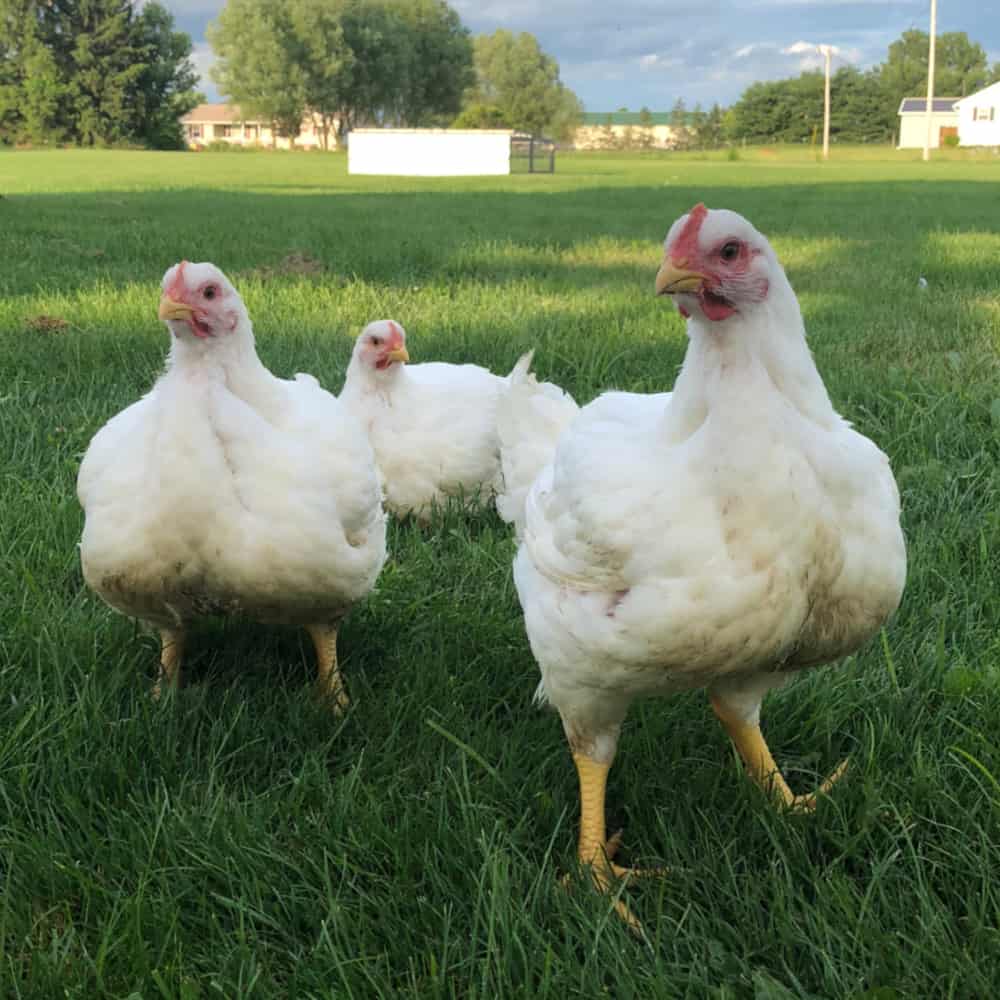
First and foremost, did you know that, despite carrying a lot of meat, the Cornish Cross chicken are actually quite small, so you won’t need a lot of space to raise them in.
On top of that, the moment that they get big enough to start occupying all of the space around them, they’re already ready to be butchered, so you won’t need to worry too much about the brooder space.
Just keep in mind that they will be occupying a lot of space in the freezer after the butchering, so be ready to free up all of the space before you start purchasing them.
Second of all, they are amongst the clumsiest creatures we’ve ever had the pleasure of owning, they literally waddle from left to right most of the time, incapable of even running away from other chicken successfully.
As such, keeping them safe is always going to be a problem because the moment that a predator sees their happy and round bodies flopping around, they’re pretty much already dead.
One recommendation that we have for that though is that you invest into mobile chicken housing, because it’ll provide your chicken with clean ground, new grass and bugs, and they don’t need to move around much to get everything, so they’ll always be out of reach for most predators.
The Cornish Cross Chicken are also known to eat and drink a lot, which is why you’ll need to invest into their nutrition a lot more than you would for any other chicken breed.
For example, for fifty birds at the age of six weeks you’ll need to stock up on two 50-pound bags per week, and as they grow larger and larger, you’ll need to invest into bigger and bigger portion sizes.
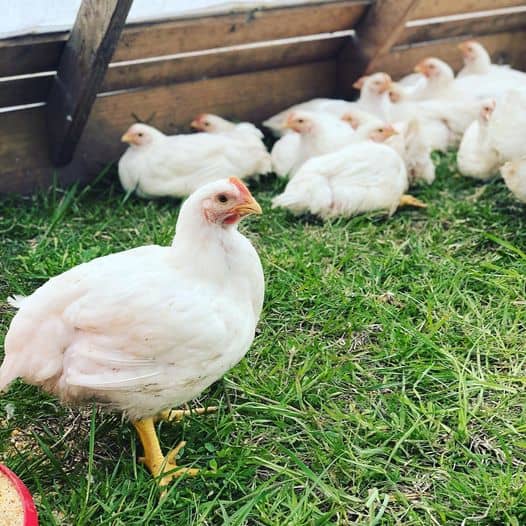
Once they get to a certain size though you can save up money by removing their feeder overnight. This is also recommended if you want to grow your chicken even further, but you don’t want them to gain weight too fast.
That is because the faster they grow, the more likely they are to have health problems, and as mentioned previously, these chicken can get sick very quickly.
Last but not least we would like to bring up the fact that you will need to actively keep your Cornish Cross chicken warm or cool depending on the season.
They can easily get overwhelmed by the temperature, and this is not good because they have weak hearts so once they pass out, the chances of them ever getting back up are close to nil.
You may think that investing into something like a heat lamp is enough to keep them up, but that may not always be the case.
We’ve heard plenty of horror stories from our neighbors, in which they tried to cut costs by simply using an old heat lamp to keep all of them warm, but it was nowhere near enough, and they ended up losing more than half of their coop overnight.
Are Cornish Cross Chicken GMO?

The term GMO simply refers to breeds that have been genetically engineered, and to answer this question, no, they are not.
Cornish Cross chicken are technically only available to us today through our own cross-breeding efforts, with the modern chicken being a cross between the Cornish chicken and the White Rock chicken.
They mature very fast and are pretty much incapable of living normal lives because they can barely even walk for themselves after a while, but that does not mean that they are genetically engineered.
Cornish Cross Chicken Alternatives
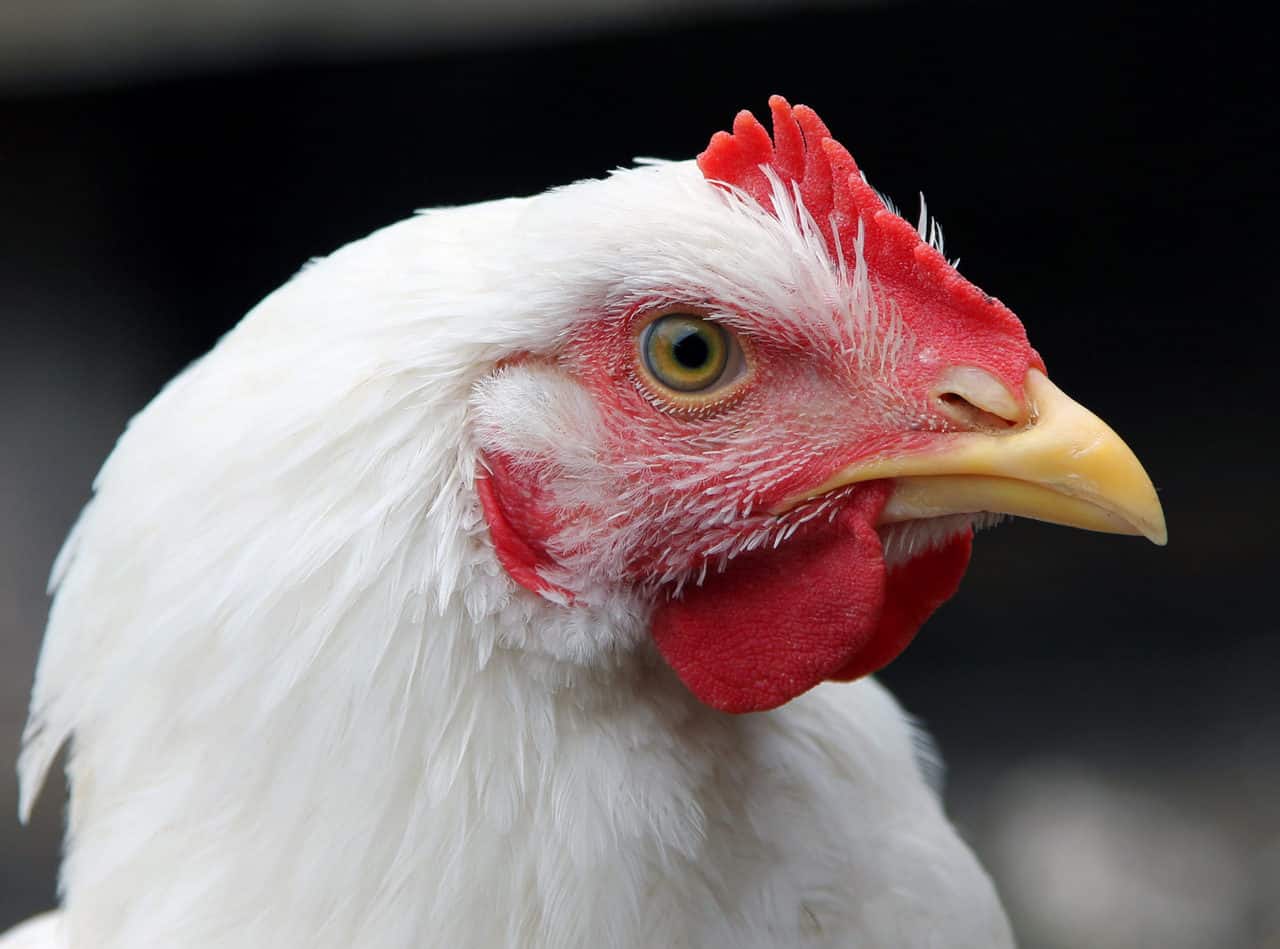
If you like the idea of the Cornish Cross chicken but you don’t have access to them around you, or better yet, you just want to know what other options you may have, you can always opt for the following alternatives:
If you want to go for something more special though, you can go for these following breeds:
- Barbezieux
- Bresse
- Crevecoeur
These are all rare heritage meat breeds that will not come easily, but if you can get your hands on them, you’ll definitely be happy enough with the end product.
Freedom Ranger chickens also make for a great alternative to Cornish Cross chicken because they are very similar but they grow slower and they are better at free-ranging.
Conclusion
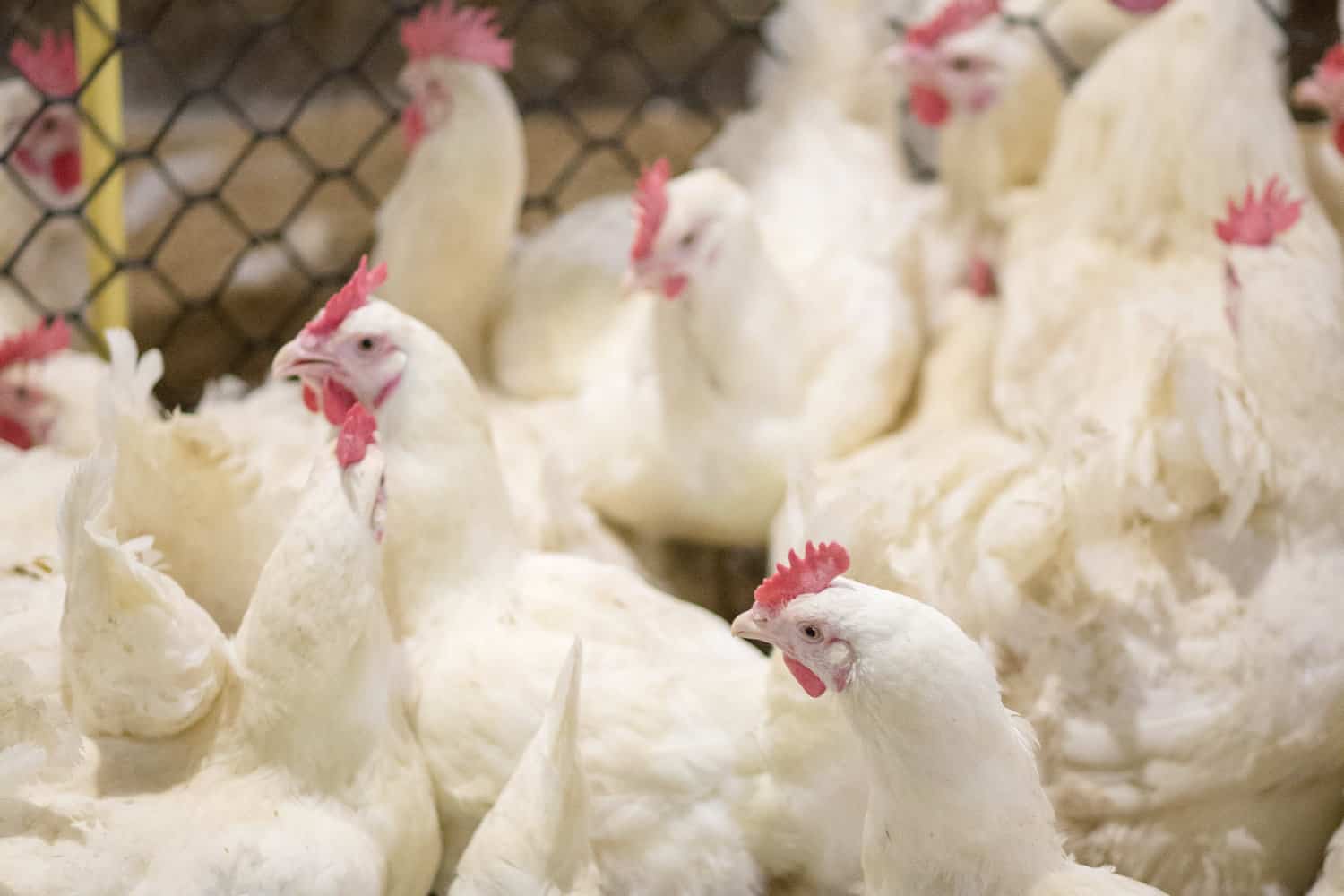
So, there you have it, the wondrous and plump chicken breed that is the Cornish Cross chicken. While it is not for everyone, we would still argue that it is worth having if all that you’re interested in is a good meat chicken.
They can be butchered in less than 10 weeks’ time, and on top of that their meat is very tasty and they are very easy to store. Just keep in mind that they’re also very sickly and they’re high-maintenance birds that will require constant attention to keep them well fed and healthy up until that 10-week mark.
Contents
- The History and Origins of the Cornish Cross Chicken
- Different Varieties of Cornish Cross Chicken
- The Benefits of Raising Cornish Cross Chicken
- The Disadvantages of Raising Cornish Cross Chicken
- Raising the Cornish Cross Chicken
- Fun Facts About Cornish Cross Chickens
- Are Cornish Cross Chicken GMO?
- Cornish Cross Chicken Alternatives





